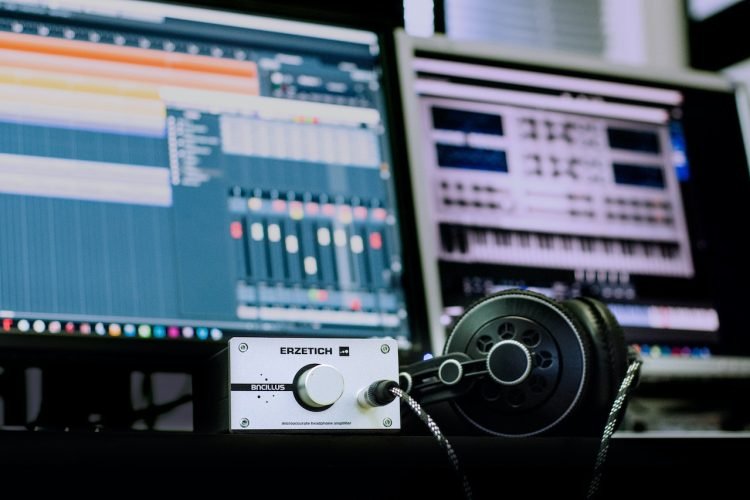
Creating the perfect home recording studio can seem like a challenging task. This is because there are so many things to consider – from the size of the room to the type of equipment you need. But don’t worry, we’re here to help! This blog post will discuss four tips on creating the perfect home recording studio. So whether you’re just starting or doing it for years, these tips will help you get the most out of your studio!
The first thing you need to do is find the right room.
The size of the room will determine how much equipment you can fit and how acoustically sound it will be. A small room like a closet or spare bedroom might be all you need if you’re starting. But if you want to create a more professional-sounding studio, you’ll need a larger space.
There are a few things to consider when choosing the right room for your studio. The first is the size of the room. You’ll need to ensure enough space for all of your equipment and that the room is large enough to avoid any unwanted echo or reverb.
Another thing to consider is the acoustics of the room. This means how sound waves bounce off of surfaces in the room. A well-designed recording studio will have acoustic treatments on the walls and ceilings to help control the sound. If you’re unsure how to treat your room, a few companies specialize in acoustic treatments. Or you can consult with a local recording studio for advice.
Lighting is the last thing to consider when choosing a room for your home studio. First, of course, you’ll want to ensure the room has good lighting so you can see what you’re doing while recording. But you also don’t want the room to be too bright, as this can cause glare on your computer screen or make it difficult to see your equipment.
If you have found that you love your outdoor living area but that it’s not quite so useful on a summer afternoon when the sun is beating down or if you wish you had protection from inclimate weather, installing alumawood patio enclosures may be for you.
The next step is to choose the right equipment.
Now that you’ve found the perfect room for your home studio, it’s time to start filling it with equipment! Of course, the type of equipment you’ll need will depend on the type of music you want to record.
If you’re just starting, the most critical piece of equipment is a computer. You’ll need a powerful computer that can run recording software without lag or glitches. You’ll also need a digital audio interface if you’re planning on recording live instruments. This connects your instruments to your computer so they can be recorded.
Once you have a computer and audio interface, there are a few other pieces of essential recording equipment. These include microphones, headphones, and speakers. Microphones are used to capture sound, whether it’s a live instrument or someone speaking. Invest in mic for group singing if you have plans on inviting others to sing with you. Headphones are essential for monitoring the sound while you’re recording and for listening back to recordings. And speakers are necessary for playback, so you can hear what you’ve recorded. Having knowledge on what to do if your equipment gets exposed to water might also be beneficial in the long run.
If you’re looking to create a more professional-sounding studio, you might want to consider a few other pieces of equipment. These include outboard gear, compressors and EQs, and MIDI controllers. Outboard gear can help shape the sound of your recordings and make them sound more polished. MIDI controllers allow you to control virtual instruments with physical buttons and knobs, which can be helpful if you’re recording music that uses a lot of different sounds.
The next step is to set up your equipment.
Now that you’ve chosen the perfect room and gathered all the essential equipment, it’s time to set everything up!
If you’re unsure how to set up your equipment, a few resources can help. You can find tutorials online or consult with a local recording studio for advice. The most important thing is to ensure everything is connected correctly and that all your cables are organized. This will help you avoid any headaches down the road.
Once everything is set up, it’s time to start recording! But before you hit record, there are a few things you need to do to prepare. First, you need to choose the right recording software. There are many different options, so it’s essential to research and figure out which one will work best for you.
Next, you need to create a file for your recording. This is where you’ll save all of the audio files from your session. Again, give the file a descriptive name so you can easily find it later. Finally, before you start recording, take a few minutes to adjust the levels on your equipment. This will ensure that everything sounds as it should and that your recordings come out loud and clear.
The final step is to edit and mix your recordings.
Once you’ve recorded all of the audio for your project, it’s time to start editing and mixing. This is where you’ll shape your recordings’ sound and put all the pieces together.
Editing can be time-consuming, so it’s important to be patient and take your time. Listen to your recordings carefully and ensure all of the takes are clean. If there are any mistakes, you can either edit them out or record new takes. Once you’re happy with the raw audio, you can start adding effects like EQs and compressors. This will help give your recordings more depth and character.
After you’ve edited and mixed your recordings, it’s time to export them as an audio file. This is the file you’ll send to whoever will listen to your project. Always export the file in a high-quality format, so it sounds its best.
These are eight tips for setting up the perfect recording studio at home. By following these tips, you’ll be well on your way to creating professional-sounding recordings. And with a little practice, you’ll be able to churn out great-sounding tracks in no time!






